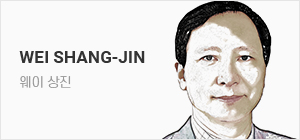

Bibek Debroy & Aditya Sinha
India‘s growth numbers look promising. A lot has been written about how India has a track record of massive growth: During the current union government’s term (2024-29), India is poised to surpass a GDP of $5 trillion and become the world‘s third-largest economy. By the term’s end, the world will near the deadline for the Sustainable Development Goals (SDGs). Despite most countries falling behind, India has fared relatively better, though it remains off-track. Economic growth is closely tied to improvements in social sectors, and India‘s projected medium-term growth rates range from 6% to 8%, with significant implications at each level, shaped largely by governance at both the union and state levels. However, it is equally important to understand the impact of policies in the last decade on the people at the bottom of the pyramid, ensuring that growth is inclusive and benefits all segments of society.
India, now the world‘s most populous country with over 1.4286 billion people, plays a critical role in shaping global demographic trends. Therefore, any improvements in its living standards can significantly impact the world. As the global population is projected to reach 8.5 billion by 2030, 9.7 billion by 2050, and 10.9 billion by 2100, India’s population―nearly 18% of the world‘s total―means that advancements in areas like health, education, and economic opportunities within the country will have far-reaching effects on global poverty, health outcomes, and income distribution. With India’s young workforce driving economic development and urbanization, raising the living standards of such a large demographic will not only benefit India but also contribute to global stability and progress, helping address challenges like inequality and sustainable development. As China‘s population declines, India’s trajectory will increasingly shape global economic and social outcomes, making its growth pivotal to the world‘s future.
India has made massive strides as far as socio-economic indicators are concerned in the last 10 years. The recent data from the first phase of the Household Consumption Expenditure Survey (HCES) 2022-23 reveals a significant improvement in living standards across India, driven by rising per capita expenditure and changing food consumption patterns. Rural households saw a 164% increase in per capita consumption, while urban households experienced a 146% rise, with states like West Bengal and Tamil Nadu showing substantial growth, and rural Sikkim leading with a 394% increase. Additionally, for the first time since independence, household spending on food dropped below 50% of total expenditure, indicating economic progress in line with Engel‘s Law, which suggests that as incomes rise, the proportion of income spent on food declines. Another critical trend is the decline in cereal consumption, particularly among the bottom 20% of households, likely due to the success of government initiatives like the Pradhan Mantri Garib Kalyan Anna Yojana (PMGKAY), which provides free food grains to millions.
| ||
| Prime Minister Narendra Modi took part in Swachhata related activities in a school. | Photo Credit: X/@narendramodi |
The National Multidimensional Poverty Index (MPI) by NITI Aayog, based on the internationally recognized Alkire-Foster methodology, reveals a significant decline in poverty in India. While the global MPI tracks 10 indicators, the National MPI covers 12, providing a more comprehensive assessment of poverty reduction. The recent report, using data from National Family Health Surveys 4 (2015-16) and 5 (2019-21), shows a sharp drop in multidimensional poverty from 29.17% in 2013-14 to 11.28% in 2022-23. This translates to approximately 24.82 crore people escaping poverty during this period. States like Uttar Pradesh, Bihar, and Madhya Pradesh made the most significant progress, with over 12 crore people lifted out of poverty across these three states alone. The MPI‘s 12 indicators also registered notable improvements across the board, underscoring India’s strides in poverty alleviation.
The implementation of the JAM Trinity―Jan Dhan bank accounts, Aadhaar biometric identification, and mobile connectivity―combined with the expansion of Digital Public Infrastructure (DPI), has substantially contributed to poverty reduction in India through efficient Direct Benefit Transfers (DBT). As of August 2024, over 531 million Jan Dhan accounts have been opened, significantly enhancing financial inclusion by integrating the unbanked population into the formal financial system. The Aadhaar system, with over 1.3 billion enrollments, provides a unique digital identity that, along with widespread mobile penetration, facilitates direct and transparent transfer of subsidies and welfare benefits to beneficiaries‘ accounts. This integration has minimized leakages and curbed corruption, leading to cumulative government savings exceeding 2 lakh crore (approximately USD 27 billion) by eliminating duplicate and fictitious beneficiaries.
Apart from this, India‘s healthcare transformation goes beyond poverty alleviation, as evident in the substantial improvements in health services and access. The Union Health Ministry’s National Health Accounts (NHA) estimates for 2020-21 and 2021-22 highlight a significant reduction in Out-of-Pocket Expenditure (OOPE), which dropped from 64.2% of Total Health Expenditure (THE) in 2013-14 to 39.4% in 2021-22. This decline reflects greater financial protection for citizens, thanks to government initiatives such as Ayushman Bharat and other health schemes. These programs have saved beneficiaries over 1 lakh crore, emphasizing the government‘s role in easing financial strain. Additionally, government health expenditure (GHE) has risen consistently, from 1.13% of GDP in 2014-15 to 1.84% in 2021-22, demonstrating a stronger public commitment to health.
This increased investment is crucial for India‘s progress toward Universal Health Coverage (UHC) and addressing long-term health challenges, including non-communicable diseases. Government hospitals and various health services have seen a boost in funding, allowing for better infrastructure and healthcare access, especially in rural areas. The rise in Social Security Expenditure (SSE) from 5.7% of THE in 2014-15 to 8.7% in 2021-22 has further strengthened health insurance coverage, protecting citizens from catastrophic health costs.
| ||
| Villagers pose with their identity cards as they stand in line to open a bank account at a camp organised by a private bank in a village at Ajmer in the state of Rajasthan. In January, the Pradhan Mantri Jan Dhan Yojana reached all Indian households, according to official data, bringing 200 million additional families to the banking system. [REUTERS] |
The National Family Health Survey (NFHS-5) (2019-2021) demonstrates substantial progress in key healthcare indicators across India. The infant mortality rate (IMR) has decreased, reflecting advancements in neonatal care, while the institutional delivery rate increased to 88.6%, indicating improved access to maternal health services. Slight reductions were observed in child stunting and wasting rates, and full immunization coverage rose to 76.4%, highlighting the expansion of vaccination programs. The total fertility rate (TFR) declined to 2.0, achieving replacement-level fertility, alongside a significant rise in modern contraceptive use to 56.5%, underscoring the effectiveness of family planning interventions. The reduction in under-5 mortality rates further signifies improvements in child health outcomes, while enhanced antenatal care coverage and increased women‘s participation in household decision-making reflect broader advancements in women’s health and empowerment. These gains are largely attributed to the successful implementation of initiatives like the National Health Mission (NHM) and the ongoing development of health infrastructure and services across both urban and rural regions.
The improvement in child and maternal health indicators in India can also be linked to the Swachh Bharat Mission (SBM), a national sanitation program launched in 2014. A quasi-experimental study (published in Nature) analyzing data from 35 Indian states and 640 districts over 10 years (2011―2020) found a strong inverse relationship between toilet access and child mortality. Districts where more than 30% of households received constructed toilets under SBM saw a significant reduction in infant mortality rate (IMR) by 5.3 and under-five mortality rate (U5MR) by 6.8 per thousand live births. Regression models, along with placebo and falsification tests, confirmed the robustness of these results, suggesting that large-scale toilet construction under SBM may have averted 60,000―70,000 infant deaths annually.
These comprehensive initiatives have laid a robust foundation for sustainable and inclusive growth, ensuring a long-lasting impact on India‘s economic trajectory. As the nation strides toward surpassing a $5 trillion GDP and cementing its status as the world’s third-largest economy by 2029, it becomes imperative to fully exploit its significant demographic dividend. With a burgeoning young workforce and ongoing urbanization, India stands at a pivotal moment to drive further economic development and social progress. The remarkable advancements in poverty reduction, healthcare, financial inclusion, and sanitation not only enhance living standards but also guarantee that growth permeates all layers of society. By continuing to invest in critical sectors such as education, health, and infrastructure, and by fostering effective governance at both union and state levels, India can sustain its impressive medium-term growth rates of 6% to 8%.
Bibek Debroy is Chairman and Aditya Sinha is OSD, Research at the Economic Advisory Council to the Prime Minister of India.


인도의 성장 수치는 희망적이다. 인도의 비약적인 성장사는 수도 없이 다뤄진 주제다. 이대로라면 인도는 현 정부 임기(2024~2029년) 내에 GDP 5조 달러를 돌파하고 세계 3대 경제 대국으로 등극할 것이다. 임기 말이 되면 지속가능발전 목표(SDGs) 역시 기한이 거의 만료된다. 대부분의 국가가 목표에 미달한 가운데, 인도는 목표 달성까지는 아니더라도 비교적 좋은 성적을 거두고 있다. 경제 성장은 사회 부문의 개선과 밀접하게 연관돼 있으며, 인도의 중기 성장률 전망치는 6~8%다. 성장률은 연방과 각 주의 거버넌스에 크게 좌우되며 수치별로 중요한 함의가 있다. 그러나 지난 10년의 각종 정책이 피라미드의 말단에 있는 이들에게 어떤 영향을 줬는지 점검하고 사회 모든 계층이 이익을 나눠 갖는 포용적인 성장을 달성하는 것도 그에 못지않게 중요하다.
인도는 인구가 14억 2860만여 명에 달하는 세계 최고의 인구 대국으로, 전 세계의 인구 추세를 형성하는 데 중요한 역할을 한다. 따라서 인도의 생활 수준이 개선되면 세계도 큰 영향을 받을 수 있다. 세계 인구는 2030년에 85억 명, 2050년에 97억 명, 그리고 2100년에는 109억 명에 이를 것으로 예상되는데, 인도는 그 중 약 18%를 차지한다. 즉, 인도에서 보건, 교육, 경제적 기회 등이 개선되면, 전 세계의 빈곤, 보건 및 소득 분배도 폭넓게 영향을 받을 수 있다는 뜻이다. 인도의 청년 노동자는 경제 발전과 도시화를 이끄는 거대한 인구 집단으로서, 이 집단의 생활 수준이 올라가면 인도만 이득을 보는 것이 아니라 전 세계가 더욱 안정되고 번영할 것이며, 불평등, 지속 가능한 발전 등 각종 문제를 해결하는 데도 도움이 될 수 있다. 중국의 인구가 감소함에 따라 인도의 인구 추이가 세계 경제와 사회에 미치는 영향이 점차 더 커질 것이며, 인도의 성장이 우리 모두의 미래에 구심점 역할을 하게 될 것이다.
인도의 사회경제지표는 지난 10년간 크게 개선됐다. 2022~2023년도 가계 소비 지출 조사(Household Consumption Expenditure Survey) 1차 데이터에 따르면, 1인당 지출이 증가하고 식품 소비 패턴이 변하면서 인도 전역의 생활 수준이 대폭 향상됐다. 농촌 가구의 1인당 소비는 164%, 도시 가구는 146% 증가했다. 서벵골과 타밀나두 같은 주가 비약적으로 성장했고, 시킴의 농촌 지역은 394%가 증가해 선두를 차지했다. 또 독립 이후 처음으로 가계의 식품 지출이 전체 지출의 50% 아래로 떨어졌다. 소득 수준이 높아질수록 지출에서 음식이 차지하는 비중이 줄어든다는 엥겔 법칙에 인도의 경제 발전이 부합하고 있다는 뜻이다. 또 하나 중요한 추세는 하위 20% 가구의 곡물 소비가 감소한 것이다. 이는 국민식량안정제도(PMGKAY) 등 정부 사업이 성공을 거둔 때문일 가능성이 크다.

인도 정부 산하 싱크탱크인 니티아욕(NITI Aayog)이 발표하는 지수로, 국제적으로 인정받은 알키레 포스터 방법론에 기반을 둔 국가 다차원 빈곤 지수(MPI)를 보면, 인도의 빈곤율은 현저히 줄어들었다. 글로벌 MPI가 10대 지표를 추적하는 데 반해, 국가 MPI는 12개 지표로 구성되어 빈곤 퇴치를 더 포괄적으로 평가한다. 최근 국가 MPI 보고서는 국민가족보건조사(NFHS) 제4차(2015~2016년) 및 제5차(2019~2021년) 데이터를 토대로 다차원 빈곤율이 2013~2014년 29.17%에서 2022~23년에 11.28%로 급감했다고 발표했다. 그 사이에 약 2억 4820만 명이 빈곤에서 탈출했다는 의미다. 우타르프라데시, 비하르, 마디아프라데시 등의 주가 가장 많이 진전됐는데, 이 세 주에서만 1억 2000만 명 이상이 빈곤에서 벗어났다. 또 MPI의 12개 지표가 골고루 크게 개선된 것으로 미뤄 인도가 빈곤 퇴치에서 큰 성과를 거뒀음을 알 수 있다.
효율적인 보조금 직접전달(DBT) 정책도 빈곤 퇴치에 한 몫을 했다. 전 국민 계좌 갖기 운동(Jan Dhan Yojana), 전자주민등록(Aadhaar), 모바일(Mobile)을 통합한 ‘JAM 삼위일체’ 프로그램이 도입되고 디지털 공공 인프라가 확충되면서다. 계좌 갖기 운동을 통해 2024년 8월 기준, 5억 3100만 개 이상의 계좌가 개설됐다. 은행 거래를 하지 않던 인구가 공식적인 금융 제도에 편입되면서 금융 포용성이 크게 향상됐다. 현재 13억 명이 등록되어 있는 전자주민등록 제도는 국민들에게 고유 디지털 신분증을 부여한다. 디지털 신분증은 모바일 보급률 성장에 힘입어 보조금과 복지 혜택이 수익자 계좌로 직접 투명하게 이체되도록 한다. 이런 통합의 결과, 재정 누수는 줄고 부패는 감소했다. 그 결과 정부는 중복·허위 수익자를 적발해 총 2조 인도 루피(약 미화 270억 달러)가 넘는 절감 효과를 봤다.
이와 별개로, 인도는 의료에서도 단순한 빈곤 퇴치를 넘어선 혁신을 이뤘다. 의료 서비스와 접근성이 눈에 띄게 개선된 점이 이런 혁신을 증명한다. 인도 보건부 국민보건계정의 2020~2021년 및 2021~2022년 추정치에 따르면, 총의료비 중 본인부담금의 비중은 2013~2014년에는 64.2%였다가 2021~2022년에는 39.4%로 급감했다. 아유시만 바라트 등 정부 정책과 기타 보건 정책 덕분에 시민들에 대한 재정적 보호가 강화됐기 때문이다. 이런 프로그램으로 수익자들은 1조 인도 루피 이상을 절약할 수 있었다. 정부가 재정적 부담을 덜어주는 데 큰 역할을 한다는 것을 여실히 보여주는 대목이다. 이와 더불어 정부 의료비 지출이 2014~2015년 기준 GDP 대비 1.13%에서 2021~2022년 기준 1.84%로 꾸준히 상승하는 등 의료 부문의 공적 투자도 확대됐다.
이런 투자 확대는 인도가 보편적 의료보장을 향해 나아가며 비감염성 질환 등 장기적인 건강 문제를 해결하는 데 결정적이다. 국영 병원과 다양한 의료 서비스에 지원되는 자금이 증가하면서 특히 농촌 지역의 인프라와 의료 접근성이 개선됐다. 또 총의료비 대비 사회보장지출의 비중이 2014~2015년 5.7%에서 2021~2022년에는 8.7%로 증가하면서 건강보험의 보장 범위가 확대되고, 시민들이 의료비 때문에 재정 파탄에 이르는 일이 줄어들었다.

제5차 국민가족보건조사(2019~2021년)를 보면 인도 전역에서 주요 보건 지표가 상당히 개선됐음을 알 수 있다. 그리고 신생아 치료가 발달하면서 영아 사망률이 감소하는 한편 병원 출산율이 88.6%로 증가해 모성 의료 서비스에 대한 접근성도 향상됐다. 아동의 발육 부진과 저체중 비율이 소폭 감소했으며, 완전 예방 접종율이 76.4%로 높아져 예방접종 프로그램이 확대됐다는 것도 알 수 있다. 더불어 현대적인 피임법 사용이 56.5%로 증가하면서 합계출산율이 2.0명으로 하락, 가족계획 개입이 효과가 있음이 입증됐다. 5세 미만 사망률이 감소하는 등 아동 건강이 개선됐다. 산전 관리가 확산되고 여성의 가족 내 의사결정 참여도가 높아지면서 여성의 건강과 권익이 강화됐다는 점 또한 증명됐다. 이런 성과는 국민건강미션(NHM)과 같은 프로그램이 순조롭게 진행되고 도시와 농촌을 아울러 의료 인프라와 서비스가 지속적으로 발전한 덕분이다.
인도에서 아동과 모성 건강 지표가 개선됐다는 사실은 2014년에 시작된 국가 위생 프로그램인 스와치 바라트 미션(Swachh Bharat Mission)과도 관련이 있다. 인도 35개 주, 640개 구에서 10년간(2011~2020년) 수집된 데이터를 분석한 준 실험 연구(네이처지 게재)에 따르면, 화장실 접근성과 아동 사망률 간에는 뚜렷한 반비례 관계가 존재한다. 이 미션을 통해 건설된 화장실을 이용할 수 있게 된 가구가 30%를 초과하는 구의 경우, 영아 사망률과 5세 미만 사망률이 각각 출생아 1000명당 5.3명과 6.8 명씩 현저히 감소했다. 이 결과는 회귀 모델, 플라시보(Placebo) 및 반증 검증을 통해 그 확실성이 입증됐다. 즉, 스와치 바라트 미션 아래에 화장실을 대규모로 건설하면서 매년 영아 6~7만 명의 생명을 살렸을 가능성이 있다는 의미다.
이런 촘촘한 프로그램들은 지속 가능하고 포용적인 성장을 위한 견고한 토대가 됐다.이는 인도의 경제적 앞날에 오랫동안 지속적인 영향을 줄 것이다. 인도가 GDP 5조 달러를 돌파하고 2029년까지 세계 3위의 경제 대국으로 우뚝 서기 위해 한 걸음씩 내딛고 있는 이때, 인도가 가진 막대한 인구 배당 효과를 적극 활용할 필요가 있다. 젊은 노동력이 급증하고 도시화가 진행되면서, 인도는 경제 발전과 사회적 진보를 더욱 촉진할 수 있는 중요한 기로에 서 있다. 빈곤 퇴치, 의료, 금융 포용성, 위생 분야에서 눈부신 발전을 거둔 덕분에 생활 수준이 향상됐을 뿐만 아니라, 사회 모든 계층이 성장의 과실을 공유하게 됐다. 교육, 보건, 인프라와 같은 핵심 부문에 계속 투자하고, 연방과 주 차원에서 효과적인 거버넌스를 촉진한다면, 인도는 6~8%라는 인상적인 중기 성장률을 유지할 수 있을 것이다.
비벡 데브로이는 인도 나렌드라 모디 총리 경제자문위원회 위원장이며, 아디티아 신하는 같은 위원회 연구 특별보좌관이다.
bonsang@heraldcorp.com














